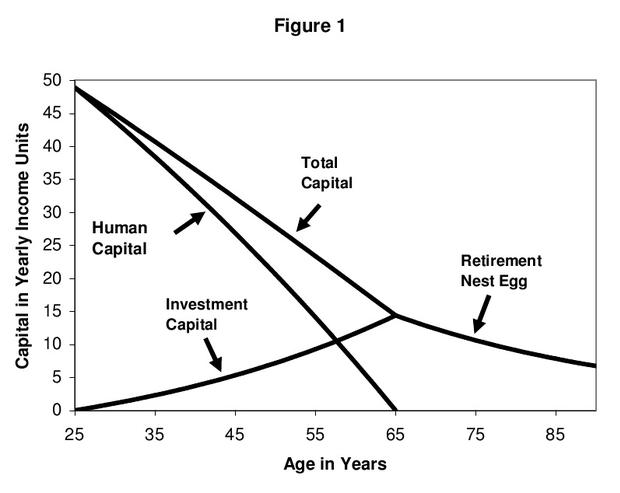A closer look at lifecycle investing
(MoneyWatch) That we human beings experience different seasons or chapters in our lives is a theme that has been explored everywhere from literature to psychology self-help books to the Bible. Now prolific writer and investing expert William Bernstein also weighs in with his just published eBook on investing throughout your life. The Ages of the Investor takes a critical look at lifecycle investing. This isn't a book for beginners, but rather is one for investors who have given up the fairy tale of getting rich quick or getting market returns without risk.
Bernstein's book begins with the common investing rule of thumb which dictates that the percentage of your portfolio in safe assets should equal your age. Thus, a 25 year old should be 75 percent in stocks and reduce stock exposure by one percentage point a year so that by age 75, he will be 25 percent in stocks. As far as rules of thumb go, Bernstein notes this isn't a bad one, and adds that target date retirement funds take similar approaches.
Young adults
Fresh out of the gate, young adults have most of their net worth in human capital, which is the ability to earn an income over the next few decades. As we age, however, we find ourselves with less human capital and more of the financial capital that comes from savings. Bernstein states that any hope of retiring early rests with saving at least 20 percent of your income starting at age 25.
The implications are that a young adult can take more risk and invest more heavily in equities due to a couple of factors. One factor is that young people have a relatively small amount of their total capital in financial assets. Another is that, because they are investing in equities over a longer period of time, there is less risk than in a lump sum investment.
Older adults
The book explores the investing needs of older adults before middle age, since the middle game is about converting from the aggressive portfolio to one that supports the retiree's lifestyle. The goal in this life stage is to make sure you have a cash flow that supports your lifestyle. Bernstein notes that Treasury Inflation Protected Securities (TIPS) are the least risky asset and building a laddered portfolio assures a certain real lifestyle. Fixed annuities have a place in providing longevity insurance. Finally, the book examines the compelling math of the best annuity of them all - delaying Social Security.
Middle aged adults
Bernstein saves the middle for last because this is the critical period when you must transition to the above strategy for older adults. While it's always a bad idea to try to time the market, Bernstein illustrates the fortune and misfortune of those born a few years apart who started saving and retiring at the same age. As it happens, luck does ultimately play a role, and demonstrates that doing the right thing can work brilliantly for some and, unfortunately, not so well for others. This is also known as the life-isn't-fair rule of thumb. One key implication is determining when risk should be taken off the table. If, for example, you are 55 or older and have 20 to 25 times your cash needs beyond Social Security, you've won the game. Take risk off the table.
Conclusion
The future is far more uncertain than we would like to admit. And though there are no guarantees, Bernstein does a brilliant job of laying out the playing field and the rules. Saving like mad, and playing the lifecycle game according to the advice in this book, can stack the odds in your favor.
Again, Bernstein's ebook is only for investors ready and willing to face the reality that there is no formula for getting rich quickly. It's short, fun, and brilliantly written, and may guide you on the path to retiring early and successfully.
